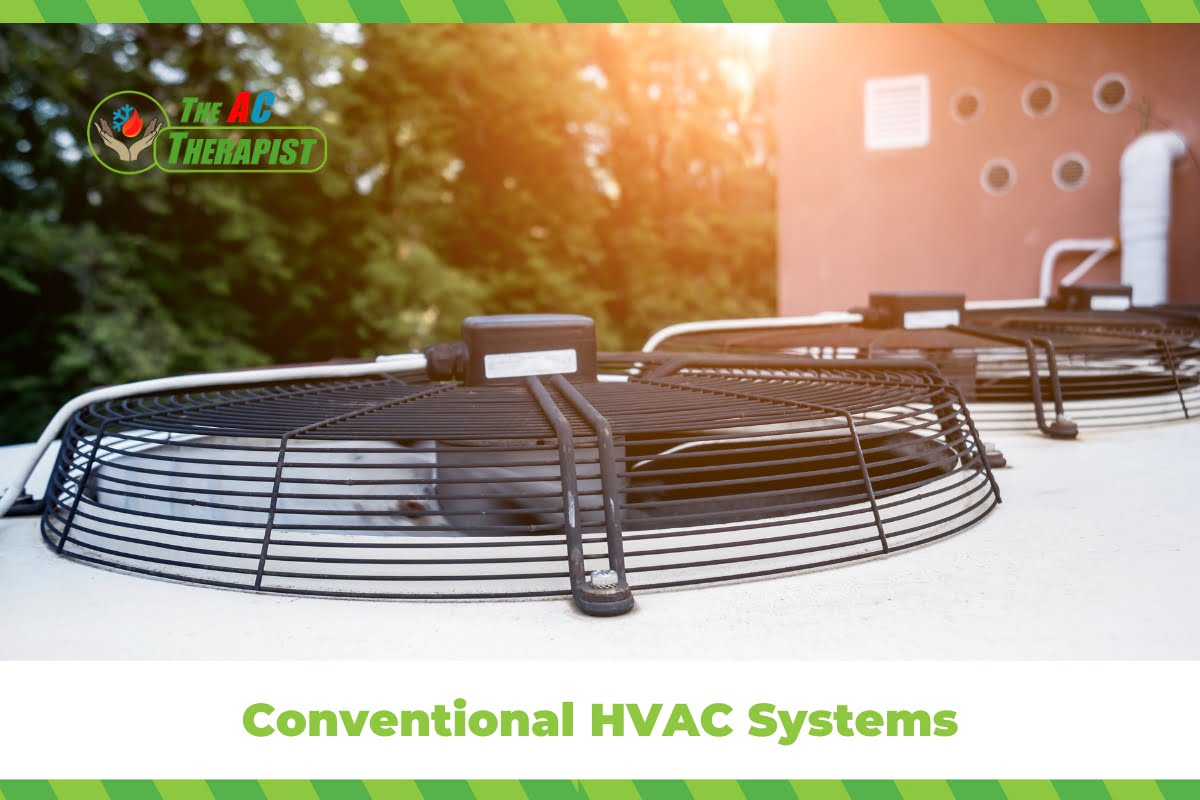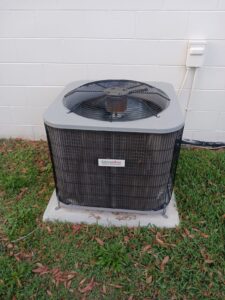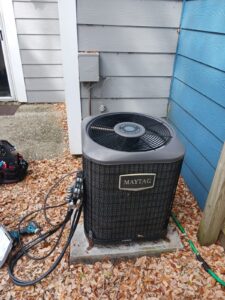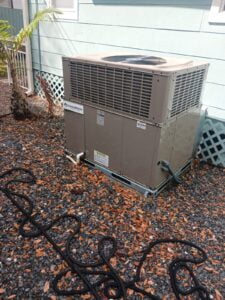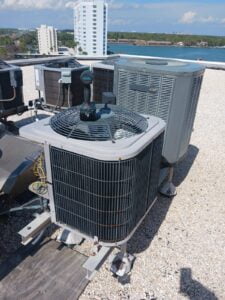Conventional HVAC Systems
When it comes to maintaining a comfortable living environment, the role of Heating, Ventilation, and Air Conditioning (HVAC) systems is unparalleled. Conventional HVAC systems, which include the traditional setups found in many homes and commercial buildings, are designed to offer a balanced climate control solution. These systems work tirelessly behind the scenes to ensure that regardless of the weather outside, the indoor environment remains as inviting as ever. But what exactly falls under the umbrella of “conventional” when we talk about HVAC systems? Typically, this refers to the standard air conditioning units for cooling and furnaces for heating, often complemented by a network of ducts that distribute air throughout the building.
Understanding the ins and outs of conventional HVAC systems is not just about ensuring your comfort. It’s also a crucial step towards effective maintenance, enhanced system efficiency, and significant cost savings over time. A well-maintained HVAC system operates more efficiently, uses less energy, and lasts longer, which means less frequent replacements and repairs. Additionally, with energy costs continually rising and environmental concerns becoming more pressing, optimizing the operation of your HVAC system can contribute to both personal savings and broader ecological benefits.
But why exactly is it so important to grasp the basics of your HVAC system? For starters, regular maintenance can prevent a multitude of problems before they occur, ranging from minor inconveniences like a slight decrease in cooling or heating efficiency, to major breakdowns that can result in costly emergency repairs. Furthermore, understanding your system allows you to make informed decisions about upgrades, replacements, and adjustments to your settings that can enhance your system’s efficiency. This doesn’t just improve your comfort; it also means lower utility bills and a reduced carbon footprint.
In essence, a deep dive into the world of conventional HVAC systems reveals a clear path toward achieving a comfortable, cost-effective, and environmentally friendly living or working space. Through this blog, we’ll explore the most frequently asked questions about conventional HVAC systems, shedding light on how these systems work, how to maintain and optimize them, and how to navigate the challenges they might present. Whether you’re looking to install a new system, maintain an existing one, or simply curious about how you can improve your current setup, this guide is your first step towards becoming an HVAC-savvy homeowner or business operator.
What Are Conventional HVAC Systems?
Conventional HVAC systems are the backbone of indoor climate control in residential, commercial, and industrial settings. Standing for Heating, Ventilation, and Air Conditioning, HVAC systems are designed to provide comfort by regulating indoor temperature, humidity, and air quality. Conventional systems, specifically, refer to the traditional setup that includes distinct units for heating and cooling, along with a network of ducts to distribute air throughout a space.
Components of Conventional HVAC Systems
The typical components of a conventional HVAC system include:
- Air Conditioner: Situated outside the home or building, the air conditioner’s primary role is to cool the indoor air during warmer months. It works by extracting heat from inside the building and releasing it outdoors, thus cooling the indoor space.
- Furnace: The furnace is usually located inside the building, often in a basement, attic, or dedicated utility space. It generates heat by burning fuel (gas, oil, or electricity) and then forces the warm air through ducts to heat the building during colder months.
- Ductwork: A network of ducts runs through walls, ceilings, and floors, distributing conditioned air (cool or warm) throughout the building. Return ducts bring air back to the system for re-conditioning, ensuring a continuous cycle of air circulation and temperature regulation.
- Thermostat: The thermostat is the control center for the HVAC system. It monitors the indoor temperature and signals the heating or cooling unit to turn on or off to maintain the desired setpoint. Modern thermostats offer programmable and smart options for enhanced control and efficiency.
- Air Filters: Located in the return air ducts, filters trap dust, pollen, and other airborne particles to improve indoor air quality. Regular replacement or cleaning of air filters is essential for maintaining efficient airflow and system performance.
- Vents: Air vents or registers are the visible part of the HVAC system in the occupied spaces, where conditioned air is delivered into rooms and return air is collected back to the system.
Operation Principles
The operation of conventional HVAC systems is based on the principles of thermodynamics, fluid mechanics, and heat transfer. In simple terms, the air conditioner removes heat from the indoor air and expels it outside to cool the building, while the furnace generates heat to warm the building during colder periods. The thermostat regulates the operation of both the heating and cooling units based on the indoor temperature relative to the set point.
Understanding conventional HVAC systems is crucial not only for selecting the right system for your needs but also for ensuring its efficient and cost-effective operation. These systems, with proper installation, maintenance, and operation, can provide years of comfortable indoor environments while managing energy consumption responsibly.
How Do Conventional HVAC Systems Work?
Conventional HVAC systems create a comfortable indoor environment by regulating temperature, humidity, and air quality through a cycle of heating, cooling, and ventilation. These systems utilize a series of components that work together to ensure efficient operation. The process involves the extraction of unwanted heat and humidity from indoor air during warm periods and the addition of heat during cooler times, all while filtering the air to remove pollutants and allergens.
Cooling Process
- Refrigeration Cycle: The air conditioning unit operates on the refrigeration cycle. It starts with a refrigerant gas being compressed by the outdoor unit’s compressor, which increases the refrigerant’s temperature and pressure. The hot, pressurized refrigerant then flows through the condenser coil where it releases its heat to the outside air, facilitated by a fan blowing over the coil. As the refrigerant loses heat, it condenses into a liquid form.
- Indoor Cooling: The liquid refrigerant, still under high pressure, travels to the indoor unit and enters the evaporator coil through an expansion valve, which reduces its pressure. This sudden pressure drop causes the refrigerant to evaporate, turning back into a gas. As it evaporates, it absorbs heat from the indoor air passing over the evaporator coil, thus cooling the air. The refrigerant, now a low-temperature, low-pressure gas, returns to the compressor to begin the cycle again.
- Air Circulation: The cooled air is then pushed through the ductwork by the system’s blower fan and distributed throughout the building. Simultaneously, warm indoor air is drawn back to the air conditioner through return ducts to be cooled again.
Heating Process
- Heat Generation: In the heating mode, the furnace takes center stage. Depending on the type of furnace, it may burn natural gas, and oil, or use electricity to generate heat. In gas or oil furnaces, the fuel is ignited in the combustion chamber, producing heat. In electric furnaces, heating elements use electrical resistance to generate heat.
- Heat Distribution: The heat generated by the furnace is then transferred to the air circulating through the unit. The warm air is pushed through the ductwork by the system’s blower fan and distributed throughout the building to raise the indoor temperature.
- Exhaust Venting: In combustion-based furnaces, harmful byproducts of the combustion process, such as carbon monoxide and other gases, are safely vented out of the building through a flue or chimney to ensure indoor air quality and safety.
Ventilation and Air Quality
- Ventilation: Conventional HVAC systems also incorporate ventilation to exchange indoor air with fresh outdoor air, removing stale air and excess humidity, and bringing in fresh, clean air. This process helps maintain air quality and comfort inside the building.
- Air Filtration: Air filters within the HVAC system trap dust, pollen, pet dander, and other airborne particles as air circulates through the system. This filtration process is crucial for maintaining good indoor air quality, protecting both the occupants’ health and the HVAC system’s efficiency.
System Control
- Thermostat: The operation of both the heating and cooling components is regulated by a thermostat, which maintains the desired indoor temperature by turning the system on and off based on user settings. Modern thermostats offer programmable and smart capabilities, allowing for more precise control over the system’s operation, and improving comfort and energy efficiency.
Understanding the basic operation of conventional HVAC systems is essential for homeowners and building managers alike. It not only aids in the proper use and maintenance of the system but also helps in making informed decisions about upgrades, repairs, and energy-saving strategies. Efficiently functioning HVAC systems not only provide comfort but also significantly impact energy consumption and operational costs.
Benefits of Conventional HVAC Systems
Conventional HVAC systems, with their traditional configuration of separate heating and cooling components, offer several benefits that have made them a staple in residential, commercial, and industrial settings. These systems not only provide a comfortable indoor environment but also offer advantages in terms of reliability, cost-effectiveness, and flexibility. Understanding these benefits can help individuals and businesses make informed decisions about heating and cooling solutions that best meet their needs.
1. Reliability and Durability
Conventional HVAC systems have a long history of use, which has allowed manufacturers to refine their designs for reliability and durability. These systems use tried-and-tested technology that can withstand the rigors of daily operation, often for many years with proper maintenance. Their components, from furnaces to air conditioners, are built to last, ensuring that users get the most out of their investment.
2. Wide Range of Options
One of the significant advantages of conventional HVAC systems is the wide range of options available. Consumers can choose from various types of furnaces (gas, oil, electric) and air conditioners (central, split systems) based on their specific needs, budget, and preferences. This variety allows for a high degree of customization to match the heating and cooling requirements of any space, whether it’s a small residential home or a large commercial building.
3. Cost-Effectiveness
In many cases, conventional HVAC systems offer cost-effective solutions for heating and cooling needs. Their initial installation cost can be lower than some of the more advanced or specialized systems, such as geothermal heat pumps. Additionally, because these systems are so widely used, parts and services are readily available, which can help keep maintenance and repair costs down over the life of the system.
4. Compatibility and Ease of Installation
Conventional systems are designed to be compatible with most existing ductwork and infrastructure, making them an ideal choice for retrofit projects or replacements. The ease of installation is a significant advantage, as it minimizes disruption and can often be completed quickly. This compatibility extends to smart thermostats and other HVAC technologies that can be integrated to enhance system performance and energy efficiency.
5. Familiarity and Ease of Use
The widespread use of conventional HVAC systems means that many users are familiar with their operation and maintenance. This familiarity makes it easier for homeowners and building managers to troubleshoot minor issues and perform routine maintenance, such as changing air filters. Additionally, the simplicity of the system’s operation, especially with the integration of programmable and smart thermostats, allows users to easily control their indoor environment according to their preferences.
6. Energy-Efficient Options
Modern conventional HVAC systems are designed with energy efficiency in mind. High-efficiency furnaces and air conditioners are available that meet or exceed current energy standards, such as ENERGY STAR ratings. These efficient models can significantly reduce energy consumption and lower utility bills, making them an environmentally friendly and cost-saving choice for consumers.
7. Improved Indoor Air Quality
With the right configuration and maintenance, conventional HVAC systems can significantly improve indoor air quality. Features such as high-quality air filters, humidifiers, and dehumidifiers can be integrated into the system to control humidity levels, reduce allergens, and eliminate pollutants from the indoor air. This benefit is particularly important for individuals with allergies, asthma, or other respiratory conditions.
Mastering Comfort: Your Ultimate Guide to Conventional HVAC Systems
Navigating the complexities of conventional HVAC systems doesn’t have to be a daunting task. As The AC Therapist, we’re committed to demystifying the intricacies of conventional HVAC systems, ensuring you have all the information needed to make informed decisions about your home’s heating, cooling, and air quality needs. Understanding the fundamentals of conventional HVAC systems is crucial, whether you’re looking to install a new system, maintain your existing setup, or simply aim to enhance your system’s efficiency and longevity.
Throughout this blog, we’ve tackled the most common FAQs about conventional HVAC systems, highlighting the importance of regular maintenance, the signs indicating it’s time for a system upgrade, and the efficiency benefits that modern conventional HVAC systems can offer. Remember, the health of your conventional HVAC system plays a pivotal role in not only maintaining a comfortable indoor environment but also in managing energy consumption and reducing operational costs.
At The AC Therapist, we believe that knowledge is power, especially when it comes to managing your conventional HVAC systems. By familiarizing yourself with the intricacies of conventional HVAC systems, you’re better equipped to handle the challenges that come with homeownership and property management. Whether you’re dealing with a minor issue or considering a significant system upgrade, understanding the basics of conventional HVAC systems can help you make decisions that ensure optimal comfort, efficiency, and value for your home.
If you ever find yourself in need of professional advice, maintenance, or installation services for conventional HVAC systems, remember that The AC Therapist is here to help. Our team of experts is dedicated to providing top-notch service, ensuring your conventional HVAC systems are running smoothly, efficiently, and effectively. Don’t hesitate to reach out for guidance on navigating the world of conventional HVAC systems, where our goal is always to ensure your utmost comfort and satisfaction.
In conclusion, taking the time to understand conventional HVAC systems can significantly impact your living environment and energy bills. We hope this blog has provided valuable insights into conventional HVAC systems, empowering you to make informed decisions and maintain a comfortable, efficient home. Remember, The AC Therapist is always here to support you with expert advice and services for your conventional HVAC systems, ensuring they serve you well for years to come.

